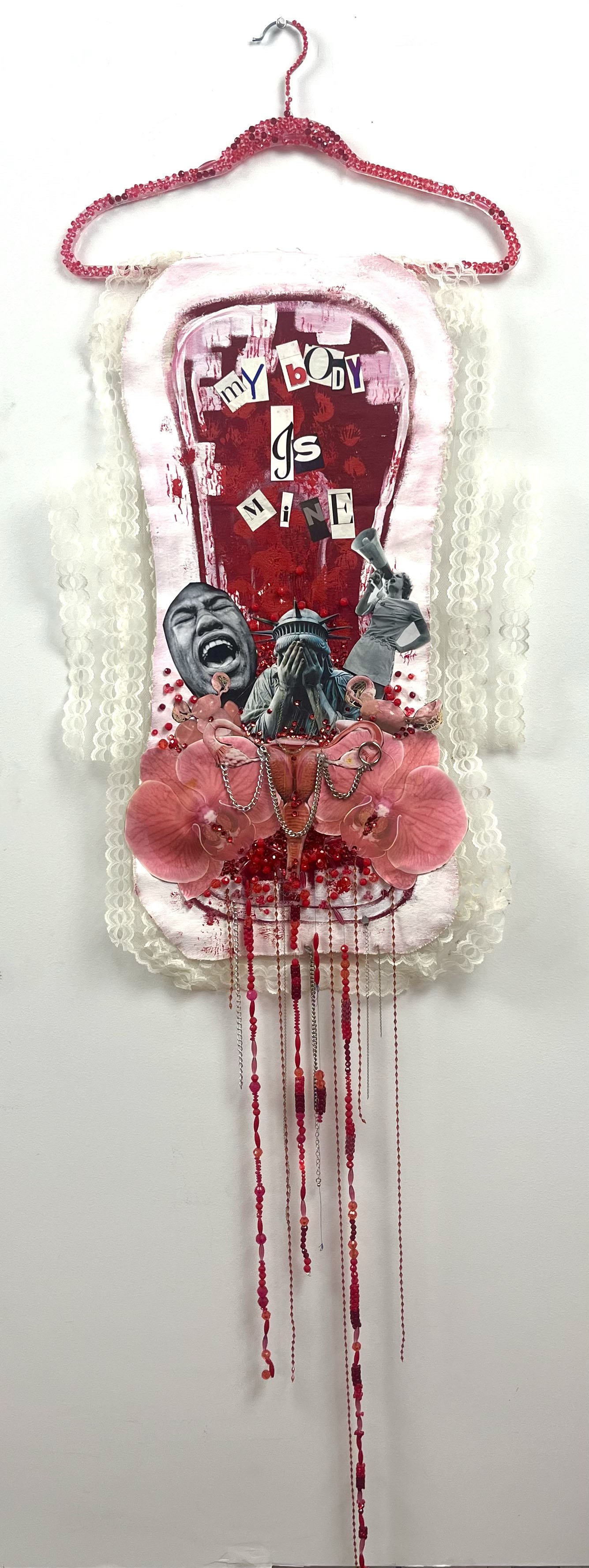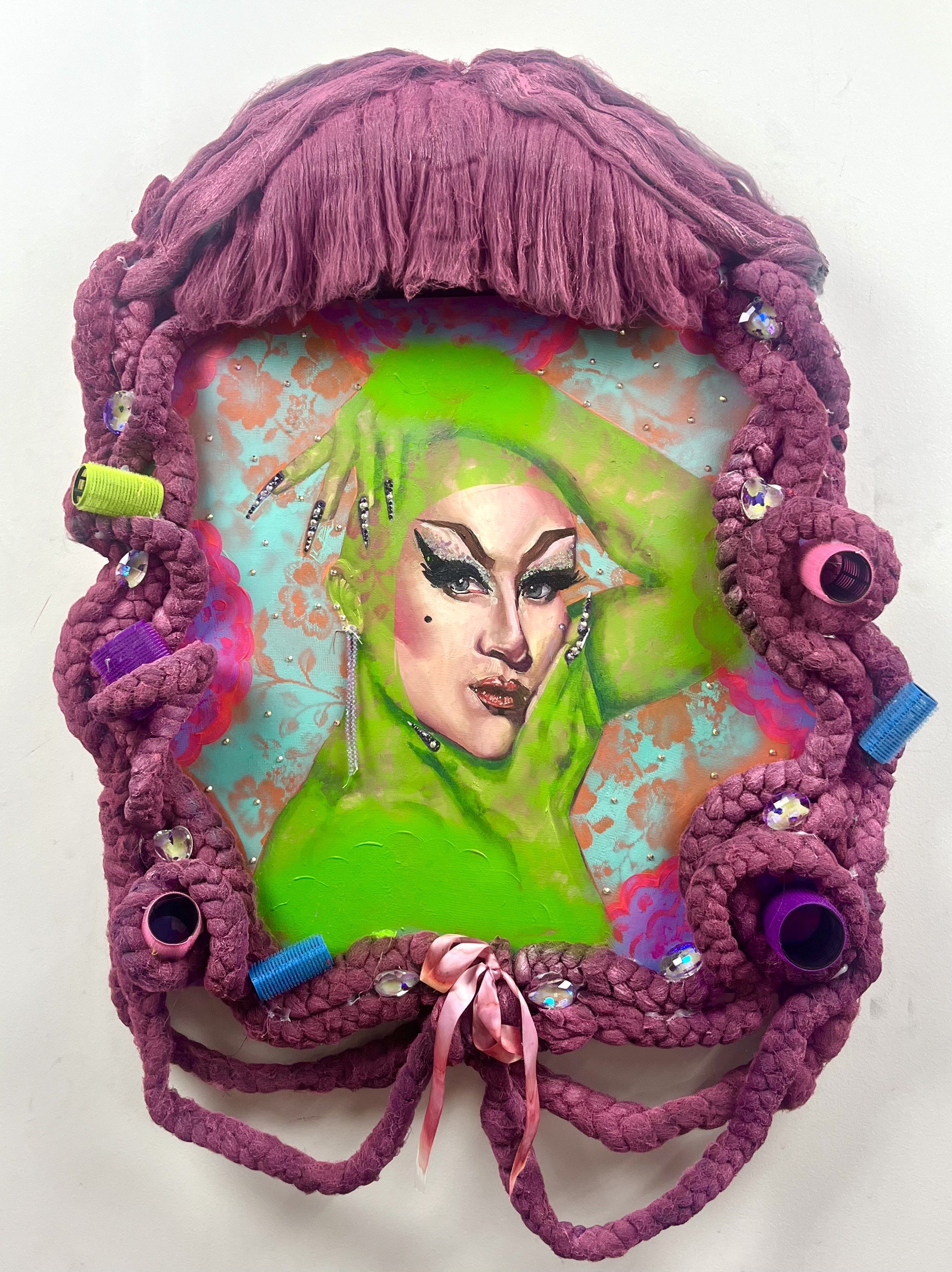Art of the Provocative Taboo
… curated by Lucy White …
from the permanent collection: Mark Armijo McKnight. Untitled, 2023
The Art of the Provocative Taboo centers on artists' representations of alternative spaces, roles, and marginalized groups, aiming to deconstruct, recontextualize, examine, and understand certain taboos ingrained within our society that have historically worked to ostracize specific groups of people and communities. In today's polarized political climate—marked by rising authoritarian rhetoric, attacks on bodily autonomy, book bans, anti-LGBTQ+ legislation, and the criminalization of dissent—this exhibition becomes especially urgent.
The featured artists confront these contemporary tensions by challenging dominant narratives and exposing the systems that uphold social and cultural taboos. This exhibition seeks to interrogate whose interests are served under these standards and how they are maintained and weaponized in the present day. By engaging with themes of resistance and reclamation, the work is underscored by the vital role that art plays as a form of critique and survival in times of socio-political unrest.
“We can’t treat issues as taboo because we find them unpleasant.”
from the permanent collection: Lulu Mhlana. Uthando Lwendoda
from the permanent collection: Chloe Sherman. Dusty and Mary, 1998
“My work became a bridge that had to be crossed by young feminists working with their bodies.”
from the permanent collection: Carolee Schneemann. Eye Body #2, 1963/2005
from the permanent collection: Catherine Opie. L.A. Gay Rodeo, 1989/2024
from the permanent collection: Esther Ferrer. Toile Reglée, 1980s
Body Horror: A Feminist Art Her-Story IN BLOOD
Sarah Kavage is a Seattle, WA based artist who creates public projects that call attention to ecological processes and human relationships with place. Made from simple natural materials, her work is largely ephemeral and brings function, tradition, and craft into a contemporary dialogue about public space and social engagement. She has made work along and about the Duwamish River, Seattle’s only river, for nearly two decades. From 2018-2021 she served as lead artist for Lenapehoking~Watershed, an ambitious cultural initiative about the Delaware River Watershed. She is a recipient of the Anonymous Was a Woman Environmental Art Grant, the Robert B MacMillen Foundation Artist Fellowship, and grants from the City of Seattle, 4Culture, and ArtPlace America, among others. She holds a BFA from Ohio Wesleyan University and a Masters’ Degree in Urban Planning from the University of Washington.
We live in a culture that is obsessed with bloody violence but cannot handle the menstrating body. I began collecting my menstrual blood for artistic purposes in 2017, and in doing so got a first hand lesson into what it is like to expose oneself as (gasp!) a person that menstruates and all of the squeamishness and weird shame that goes with it. Despite all of the work that other people have done to present the menstruating / feminine body as a magical bearer of life, and more importantly a complex whole - that view is still marginalized. This is a taboo that still runs deep.
All of that, along with the fact that I have chosen not to have children and was coming to the end of my menstruating years, compelled me to continue to explore menstrual blood as artistic medium. These little paintings were prompted by a conversation with writer Anne Elizabeth Moore about her book Body Horror. They are a tribute to the raw feminine body, the societal taboos around it, and a few of the artists who have confronted these historical taboos in the past.
Katlyn Garner is an oil painter and mixed media artist from Greenfield, Indiana. Currently a junior at the Art Academy of Cincinnati, Katlyn’s work serves as a platform to explore themes of gender expression, identity, and sexuality without reservation. This has fueled her passion for creating art that focuses on women and queer individuals, emphasizing human rights and visibility.
Since visibility is a crucial aspect of her creative process, Katlyn aims to make bold, loud, and impactful artwork by being unapologetically herself—embracing a flashy, hyper-feminine, maximalist, and over-the-top style with a camp aesthetic, finding inspiration in the art of drag, both as a form of gender expression and as a political tool.
Katlyn uses traditionally hyper-feminine materials, such as rhinestones, glitter, lace, textiles, gems, and ribbons, to contrast these items with the realities faced by women and queer people in a patriarchal, heteronormative society. Additionally, she incorporates these materials to create sculptural frames for her work, using framing to explore themes of absurdity, scale, and shape. As a young artist, Katlyn is continually discovering herself and her identity through art. Creating provides her with a safe space to embrace who she is without shame, with the hope that her work can offer the same sense of liberation to other women and queer individuals.












